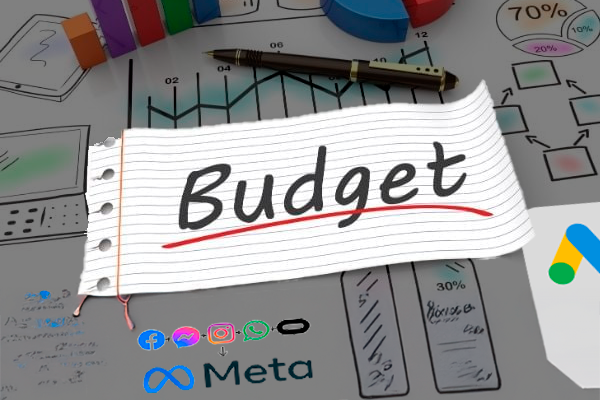When you’re new to traffic management, one of the biggest challenges is proving your skills to potential clients. You may know how to set up ads, optimize campaigns, and read analytics, but without a portfolio, it’s hard for others to trust you with their budget.
The good news is that you can build a compelling portfolio even without paid client experience — and here’s exactly how to do it.
Why a Portfolio Matters in Traffic Management
A portfolio does more than showcase your work; it builds credibility and confidence in your ability to deliver results.
Here’s why it’s so important:
- Differentiates you from other beginners who have no proof of work
- Shows that you understand campaign structure, strategy, and results
- Helps you close clients faster because they see you’ve done the work before
- Becomes a foundation for building authority in your niche
Step 1: Understand What Makes a Great Portfolio
A strong portfolio for traffic management isn’t just a collection of pretty screenshots. It should include:
- Campaign Goals – What the ads were trying to achieve (sales, leads, sign-ups)
- Strategy Used – Audience targeting, ad creative approach, and platform choice
- Metrics & Results – CPC, CTR, conversions, ROAS, presented clearly
- Visual Proof – Screenshots from the ad manager (with sensitive info blurred if necessary)
- Lessons Learned – Insights that show you can adapt and improve
Step 2: Get Real Campaign Experience Without Paid Clients
If you have no client work yet, you can still create portfolio pieces through:
Personal Projects
Create a mock business (or use your own passion project) and run real ads with a small budget.
Example:
- Build a landing page for a digital product or blog
- Spend $50–$100 over a week to drive traffic
- Document every step and result
Volunteer Work
Offer free traffic management to a friend’s or family member’s business for 2–4 weeks in exchange for permission to use the results in your portfolio.
Collaboration with Startups
Many small businesses or early-stage startups are willing to let you manage a small ad budget in exchange for discounted or free service.
Simulation Campaigns
Even without spending money, you can create mock strategies:
- Research a real business (without contacting them)
- Plan their ideal ad campaign with targeting, creatives, and budget breakdown
- Present it as a “case study concept” in your portfolio
Step 3: Structure Your Portfolio for Maximum Impact
Organize it so that potential clients see results first. Here’s a suggested structure:
Headline & Specialization
Example: “Helping e-commerce brands scale with high-ROI Facebook Ads”
Case Study Section
- Title: “Facebook Ads for Local Gym – 3x ROI in 30 Days”
- Campaign goal
- Ad strategy (audience, creatives, budget)
- Results with numbers and visuals
- Key takeaway
Skills & Tools
List platforms and tools you use: Facebook Ads Manager, Google Ads, Google Analytics, Canva, Looker Studio.
Testimonials or Feedback
If you don’t have client testimonials yet, include self-reflection or feedback from collaborators.
About You
A short paragraph about your mission, values, and what makes your approach unique.
Step 4: Present Your Portfolio Professionally
You can showcase your portfolio in different formats:
- Personal website (best for long-term branding)
- PDF file you can email to prospects
- Google Slides for a clean, visual presentation
- Behance or Dribbble for creative examples
For a professional touch:
- Use consistent colors and fonts
- Keep it clean, with plenty of white space
- Use high-quality images and avoid pixelated screenshots
Step 5: Keep Improving and Updating It
A portfolio is a living document. As you gain more experience:
- Replace beginner projects with higher-profile campaigns
- Add before-and-after results to show growth
- Include multiple niches if you haven’t specialized yet
- Highlight campaigns that show problem-solving skills, not just big budgets
Pro Tips for Beginners
- Always get permission before sharing client data and blur sensitive info
- Include context with every screenshot — numbers mean nothing without a story
- Even failed campaigns can be valuable portfolio pieces if you show what you learned
- Quality matters more than quantity — three strong case studies are better than ten weak ones
Example Portfolio Entry
Campaign Title: Launching a New Yoga Class for a Local Studio
Goal: Increase sign-ups for the new class within 2 weeks
Budget: $80 total
Platform: Facebook & Instagram Ads
Strategy: Local targeting (5 km radius), engaging image creative, short and clear copy, link to sign-up form
Results:
- Reach: 4,500 people
- Clicks: 210 (CPC $0.38)
- Sign-ups: 35 (Cost per sign-up: $2.28)
Key Insight: Offering a free trial in the ad copy doubled the conversion rate compared to the control version
The Bottom Line
You don’t need years of client work to build a portfolio that impresses. What matters is your ability to plan, execute, and analyze campaigns — and to present that process clearly. By starting with personal projects, volunteering, and mock campaigns, you can build enough proof to start landing paid clients in just a few weeks.



